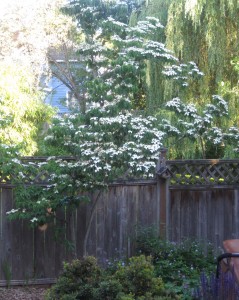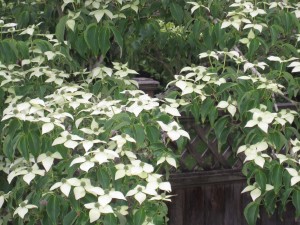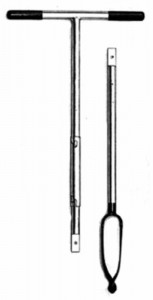Long-time readers of this blog might remember a Friday quiz I gave back in 2010. It involved the slow but inexplicable decline of our dogwood (Cornus kousa). On the following Monday I revealed the reason for the decline and reported that we were moving this nearly dead tree to another location without the offending perched water table.
In 2011 I posted my first update along with photos of the new leaves and flowers. And today I reveal its obvious recovery to a fully functional if somewhat still spindly tree (several of its multiple leaders died as a result of the rotted root system).


There are several take-home lessons from this example:
1) Don’t assume that tree decline is due to a nutrient deficiency or pest/disease problems. The last thing a stressed tree needs is unnecessary additions of fertilizers or pesticides.
2) Explore soil conditions to find possible water movement disruptions. Our perched water table was discovered serendipitously with our pond installation. You can do the same with a good-sized soil auger. (I bought one of these bad boys, but haven’t had a need to use it yet. Some day…)

3) If a tree or shrub is failing, by all means move the poor thing to another location. In doing so, you may discover that the roots are still stuck in a clay ball and have not established into the native soil. Clean off all the burlap, twine and clay before replanting.
4) Be patient. If it took a while for your tree to reach its current sorry state, it will take a while for it to recover.